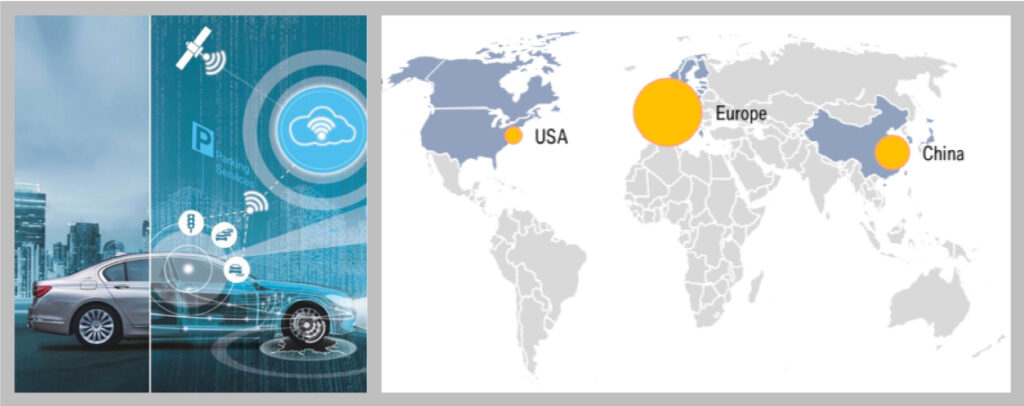The Open Auto Drive Forum event is supported by the NDS Association and brings together experts from automotive data, software, and user experience. At the 13th OADF event in July, Hannah Theuer, Product Owner for BMW China’s Map & Road Clearance service based in Shanghai, was one of the presenters. She shared her hands-on experience with the challenges when developing ADAS and Automated Driving software for multiple markets and the benefits of working with data standards.
Starting with the challenge at hand, Hannah pointed out that the market for map and geodata offers a manifold of suppliers, none of which offer a truly global coverage at the desired data quality and depth. As a result, an OEM like BMW needs to work with multiple vendors to cover all key markets in order to offer the high quality of features and user experience the end-consumers expect.
She continued to emphasize that in markets like China and South Korea, additional national legislation needs to be observed. As a third challenge, Hannah talked about how vehicles, features, and supporting services across global markets are more tightly synchronized, launching at the same time, and hence require a quasi-simultaneous roll-out. This results in the need for regional and local teams who can develop against local requirements, work with local suppliers, and ensure fast verification of new product increments in compliance with the local geodata regulations.

BMW currently works across four times zones and three continents with teams in Europe, China, and the USA on the global Map & Road Clearance service. This service provides static and dynamic map information for the vehicles’ ADAS and Autonomous Driving functions:
Hannah shared with the OADF audience that the complexity during development and operation of ADAS and Autonomous Driving functions grows significantly with every addition of a supplier-, country- or version-specific variant.
To deal with and mitigate the complexity, BMW uses the Navigation Data Standard NDS – the worldwide standard for map data in automotive eco-systems. She shared that while NDS offers a single spec for map data across vendors and markets, each version of NDS requires adaption in many areas: the functional code, tests, documentation (to fulfill ISO standards), validation and verification, and the NDS related tooling. Nevertheless, by using NDS, BMW was able to create a global Map & Road Clearance base product with shared map-related code in the range of 95-97% and only minimal efforts for supplier or country-specific adaptions in the range of 3-5% of map-related code. For new features, the global Map & Road Clearance stack is developed and tested using the first available NDS map sample from any supplier. This helps accelerating development of the base product by reducing dependency on roadmaps of individual suppliers to some degree.
BMW has built up global development expertise on the Map & Road Clearance base product and as a result, new base product increments can be implemented at any one of the major development locations. During the development phase, BMW continuously ensures to have a globally compatible architecture and can leverage a global team to resolve dependencies and bottlenecks for high priority topics, e.g. refactoring, bug fixing, or stabilization. This helps BMW to achieve a shorter time-to-market in all key markets. Hannah concluded that BMW considers a high degree of standardization to be one of the key enablers that allows for new working models which in turn are leading to an increased global flexibility and development capabilities.
Back to news →